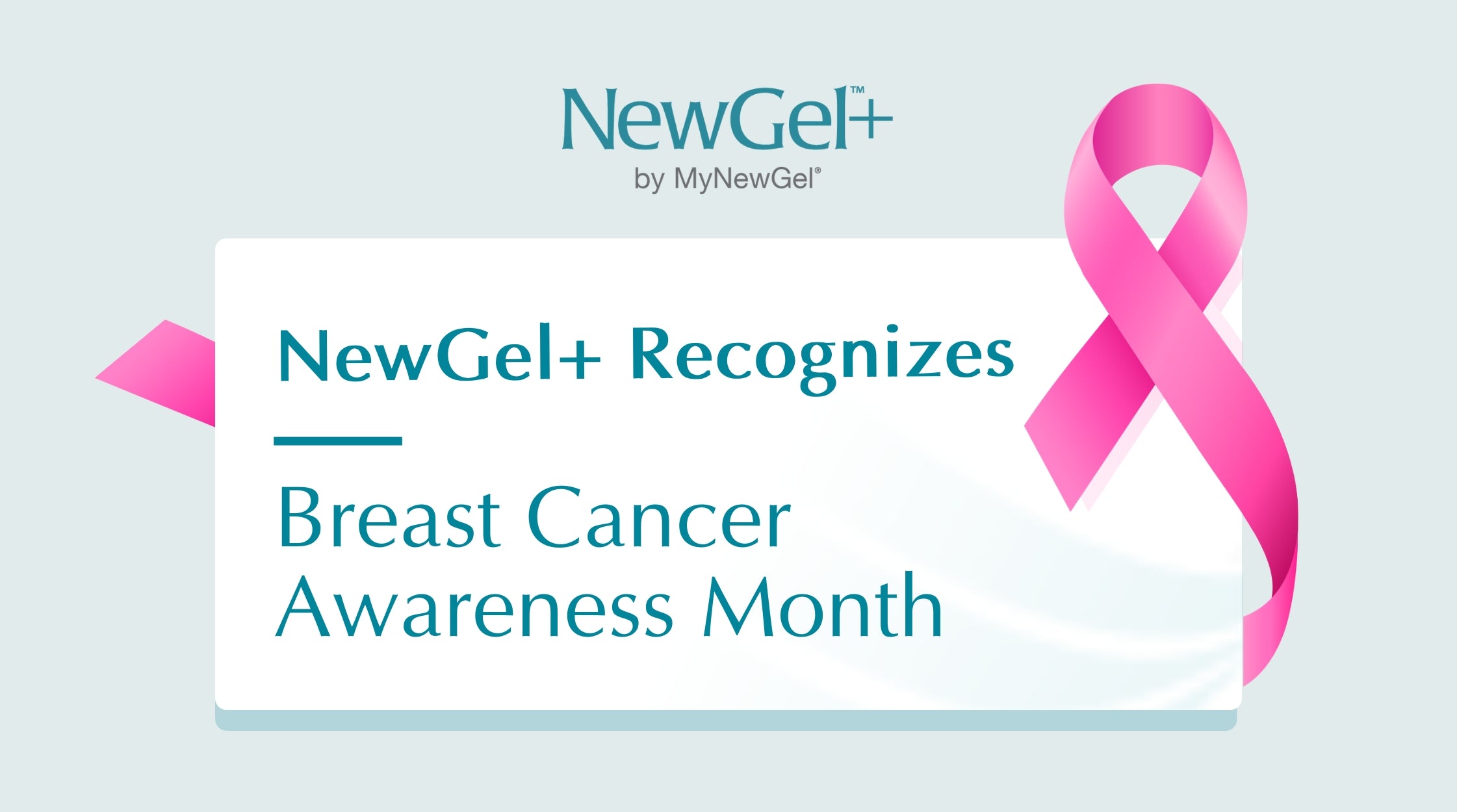Scar Care After Mastectomy: Breast Cancer Awareness and Support

Every October, Breast Cancer Awareness Month reminds us of the millions of women impacted by this disease and the importance of supporting their recovery, body confidence, and long-term healing. In 2025, an estimated 310,720 new cases of invasive breast cancer are expected to be diagnosed in the United States¹.
One of the most important but often overlooked aspects of recovery is breast cancer scar care after mastectomy. Healing is not only about removing cancer but also about restoring comfort, confidence, and quality of life. For many women, scars are a lasting reminder of their surgery. Understanding how to care for scars with silicone therapy and knowing what to expect from different mastectomy types can make recovery smoother and less overwhelming.
Tips for Silicone Scar Care after Mastectomy
Silicone is considered the first-line therapy for scar management and is widely recommended by plastic surgeons and dermatologists². When used consistently, silicone can help flatten, soften, and fade scars over time. Here are some best practices for using silicone after mastectomy:
-
Start after healing: Begin when incisions are fully closed, usually 2–3 weeks after surgery, and only once cleared by your surgeon.
-
Consistency matters: Wear silicone sheets or strips for 10 to 16 hours per day for about 12 weeks for the best results.
-
Routine care: Wash your skin daily, clean silicone every few days, and replace products when they lose adhesion.
-
Monitor your skin: If irritation occurs, stop use and check with your healthcare provider.
Silicone works by creating a protective barrier that locks in hydration, regulates collagen, and helps reduce redness and thickness in scars³.
Types of Mastectomies and Reconstruction
Not all mastectomies are the same. The surgical method impacts both the scar pattern and the type of scar care that is most effective.
Simple Mastectomy or Lumpectomy
-
Typical scar: straight or curved chest line.
-
Recommended NewGel+ product: 1"×6" silicone strips or 1"×3" strips for smaller incisions and drain sites.
Skin- or Nipple-Sparing Mastectomy with Implant Reconstruction
-
Typical scar: around the areola or under the breast crease.
-
Recommended NewGel+ product: 2"×8" strips for longer scars, or 1"×6" strips for smaller areas.
TRAM or DIEP Flap Reconstruction
-
Typical scar: oval or football-shaped scar on the breast, plus a long abdominal scar from hip to hip.
-
Recommended NewGel+ product: 2"×18" strips or 2"×24" strips for abdominal scars, and smaller shaped sheets for breast incisions.
Tailoring scar care to the type of surgery not only supports healing but also helps women feel more comfortable during recovery.

Why Awareness Matters
Breast cancer is the most commonly diagnosed cancer among women worldwide, and about one in eight women in the United States will develop invasive breast cancer during her lifetime¹. Thanks to early detection and treatment advances, survival rates continue to improve. However, survivorship also brings challenges that extend beyond treatment, including the physical and emotional effects of scarring.
Resources like the National Cancer Institute, American Cancer Society, and CDC offer education, prevention tools, and support for survivors navigating life after diagnosis. Awareness campaigns highlight the importance of screenings and encourage conversations about recovery and quality of life.
Final Thoughts
At NewGel+, we believe healing does not stop when surgery ends. That is why we provide products that empower survivors to take charge of their scar care and recovery. This year, we proudly donated scar treatment products tailored towards breast cancer patients to the National Breast Cancer Foundation, with selections tailored to specific mastectomy types so women received what they needed most.
Every woman’s healing matters, and by combining awareness with action, we can ease the burden of scars and help survivors move forward with confidence.
What is the best way to care for scars after a mastectomy?
The best approach is to follow your surgeon’s post-op instructions and, once incisions are fully closed, use medical-grade silicone sheets or strips. Silicone is widely recommended by plastic surgeons as the first-line option for scar management because it helps keep scars hydrated, soft, and less visible over time. Consistent use for several hours a day over multiple weeks gives the best results.
How soon after breast cancer surgery can I start using silicone for scar care?
Most women can begin using silicone about 2 to 3 weeks after surgery, but only once the incision is fully healed and cleared by their surgeon. Starting too early can irritate the wound, so always wait for professional approval before beginning silicone therapy.
Do different types of mastectomy lead to different scars?
Yes. A simple mastectomy or lumpectomy often leaves a straight or curved chest-line scar. Skin- or nipple-sparing mastectomies with implants may result in scars around the areola or under the breast crease. TRAM or DIEP flap reconstructions create both breast scars and a long abdominal scar. Knowing the type of mastectomy can help you choose the right scar care products.
Why is silicone considered the gold standard for scar treatment?
Silicone has been clinically shown to flatten, soften, and reduce the redness of scars. It creates a protective barrier that locks in hydration, regulates collagen production, and minimizes abnormal scar tissue formation. It is also non-invasive, easy to use, and safe for long-term wear.
Can scar care improve emotional recovery after breast cancer surgery?
Yes. Scarring can be a physical reminder of breast cancer treatment. Many women report that taking steps to care for scars helps them regain confidence and feel more comfortable with their bodies. Addressing scars is not only about appearance but also about emotional healing.
Sources Cited
1) American Cancer Society. Breast Cancer Facts & Figures 2023–2024. Link
2) American Society of Plastic Surgeons. Breast Reconstruction Procedures. Link
3) National Cancer Institute. Breast Cancer Treatment (PDQ®)–Patient Version. Link
4) Mayo Clinic. Mastectomy: What You Can Expect. Link
5) Centers for Disease Control and Prevention. Breast Cancer Statistics. Link




Comments